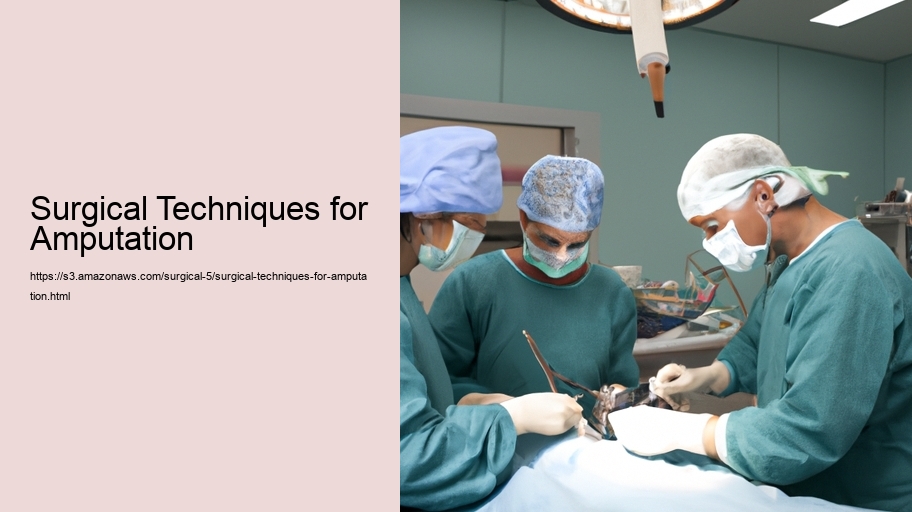Surgical Techniques for Amputation: An Essay
Amputation, the surgical removal of a limb or a part of a limb, is a procedure that has been practiced for centuries, often as a life-saving measure. Over time, surgical techniques for amputation have evolved tremendously, incorporating advances in medical knowledge, anesthesia, surgical tools, and post-operative care. The decision to amputate is never taken lightly, and it is usually considered when a limb cannot be saved due to severe trauma, infection, or diseases like peripheral arterial disease and diabetes.
Pre-Operative Considerations:
Before an amputation is performed, careful planning is required. Surgeons must consider the patient's overall health, the condition of the affected limb, and the expected outcome after the surgery. Imaging tests such as X-rays, MRIs, and CT scans provide valuable information about the bone and soft tissue status, helping to determine the level of amputation. The goal is to preserve as much healthy tissue as possible while ensuring that the remaining limb can heal properly and, ideally, be fitted for a prosthesis.
Surgical Techniques:
The surgical techniques for amputation can vary depending on the location and reason for the amputation. However, some common principles apply to most amputations:
Incision Method:
There are two primary methods of incision: the closed (flap) amputation and the open (guillotine) amputation. In a closed amputation, the surgeon creates flaps of skin and muscle that will be sutured over the bone after it is cut, while in the guillotine amputation, the limb is cut without forming flaps, and the wound is left open initially, to be closed in a subsequent surgery.
Tissue Handling:
Surgeons must handle tissues gently to avoid additional trauma. They carefully cut through the muscles and separate the nerves and blood vessels, which are then tied off or sealed to prevent bleeding and reduce pain.
Bone Management:
Once the soft tissues are divided, the surgeon cuts through the bone. The bone is often smoothed or beveled to avoid sharp edges that could complicate the healing process or cause discomfort when using a prosthesis.
Nerve Management:
Nerves are carefully handled during amputation. They are gently pulled and cut so that they retract into the remaining tissue, reducing the chances of painful neuromas (nerve tumors) forming at the stump.
Blood Vessel Management:
Major blood vessels are tied off or cauterized to prevent hemorrhage. Ensuring proper blood vessel management is crucial to prevent complications during and after surgery.
Closure and Dressing:
For closed amputations, the muscle flaps are positioned over the bone end and the skin is closed with sutures or staples. Drains may be inserted to prevent fluid build-up. The stump is then wrapped in a sterile dressing to protect it from infection.
Post-Operative Care:
After the surgery, the focus shifts to pain management, preventing infection, and promoting healing. Rehabilitation begins early to adapt the patient to life after amputation, including the use of a prosthesis if appropriate. Physical therapy is a critical component of post-operative care, helping to maintain muscle strength and improve mobility.
Advances in Surgical Techniques:
Modern surgical techniques continue to evolve. One example is the use of osseointegration, where a titanium implant is inserted into the bone, allowing for a direct skeletal attachment of the prosthesis. This technique can improve the stability and function of the artificial limb. Additionally, advances in microsurgical techniques have improved the management of nerves and blood vessels, reducing post-operative pain and speeding up recovery.
Conclusion:
Amputation is a profound event that can save lives but also significantly impacts a patient's life. Modern surgical techniques for amputation are sophisticated and continue to improve, aiming to enhance the quality of life for amputees. The careful planning and execution of these procedures, along with ongoing advancements in medical technology, offer hope for better functional outcomes and the promise of a more active future for those undergoing amputation.
